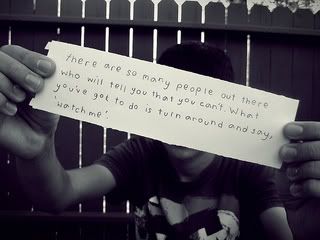It's not that we don't want to talk about it or aren't proud of it; we both are, immensely so. However, we made our first film, a $20,000 horror feature called Plasterhead, when we were 22. We did a lot of things right, and we also did some things wrong. As with any piece of art, Plasterhead inspired a lot of strong opinions, from the extremely positive to the vile and negative. Mike and I have learned and matured so much in the time since Plasterhead that we don't want to be judged solely on that one piece of work. Mainly, though, we want to keep the focus of this blog about our new film, Nitecrawlers.
That being said, our little $20,000 horror film Plasterhead was, by all accounts, a great success. It was distributed on DVD in the US by Arts Alliance America (distributors of Super Size Me). Through our distribution deal, "Plasterhead" was available in stores like Wal-Mart, Best Buy, FYE and Hollywood Video, and can still be found online at Netflix.com (DVD & streaming), Amazon.com and Blockbuster.com.
Here's the original distributor's sell sheet for the American release:

Another cool thing was seeing the film released in different international territories. Plasterhead has been released in four countries: Russia, Japan (as No Face), Germany and Singapore.
Here is the Japanese and Russian cover art:


If you want to learn more about the film, you can visit the Official Website. Here also is the teaser trailer for the film:
And finally, since a lot of you guys and gals visiting the blog are aspiring filmmakers, I'll share with you a "Reverse Distribution" case study video that Mike and I recorded for Plasterhead. Reverse distribution, if you're not familiar with the term, is the process of preparing for distribution early in on the filmmaking process. Essentially "reverse engineering" your film for distribution by tailoring elements specifically to things distributors are looking for.
As a tiny film with no budget and no "name" actors, we faced an uphill battle finding distribution with Plasterhead. We spent a lot of time preparing for distribution, even before we rolled on a single frame. We credit the reverse distribution techniques we employed on Plasterhead for the film's eventual success. Anyway, here's that video, if you're interested:
So anyway, that's about everything there is to know about Plasterhead. As good an experience as it was, Nitecrawlers will be on a whole new level. We can't wait.
- K






